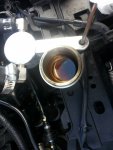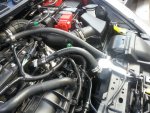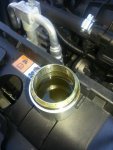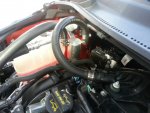I've been to a few "spotted meets" and some SCCA events and I'm seeing A LOT of FiST and FoSTs without a catch can. I traded my 2012 5.0 for my FiST and took the two JLT billet catch cans off the 5.0 and mounted them on my FiST on same day of purchase.. photo's are the catch cans at 1500ish miles when I changed the factory oil for royal purple to further break in the engine (I use Rotella T6 now)








